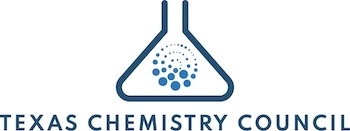Complete Story
02/14/2025
EPA set deadline for states to flag counties with excess soot pollution. Gov. Abbott won't follow it
Houston Chronicle | Rebekah F. Ward | Feb. 7, 2025
EPA set deadline for states to flag counties with excess soot pollution. Gov. Abbott won't follow it
Gov. Greg Abbott is opting to ignore a Feb. 7 federal deadline to identify which Texas counties violate new health limits for air pollution, potentially allowing Harris County and others off the hook for missing Biden-era targets.
Abbott's decision comes amid an ongoing lawsuit in which Texas Attorney General Ken Paxton attacked the Environmental Protection Agency's legal basis for changing the air quality standards.
The EPA had strengthened the annual health limit for tiny particles in the air known as PM2.5 in early 2024. The fine particulate matter is invisible to the naked eye and can lodge in people’s lungs and cardiovascular systems, leading to heart disease and asthma, among other health problems.
When Paxton sued the EPA last March, he accused the federal agency of an about-face on the pollution limits, saying former President Joe Biden "directed EPA to redo its review as part of a broader effort to 'tackle the climate crisis.'"
While Abbott did not respond to questions about his decision, Richard Richter, a spokesman for the Texas Commission on Environmental Quality, said the agency had also slammed the brakes on the process.
TCEQ staff had previously suggested naming Harris, Dallas, Bowie and Tarrant counties as nonattainment zones, meaning they violated the new federal health standards. The TCEQ was scheduled to present its research at a commission meeting on Dec. 18, but the agency skipped the agenda item and never rescheduled.
This would have been the first time Texas failed federal soot standards. Typically, governors make these determinations before submitting them to the EPA for review. Then, each state that violates the rule has to build an implementation plan to bring pollution levels down in designated counties.
EPA spokeswoman Molly Vaseliou said the agency had no comment on the state's decision to withhold rule recommendations from the EPA.
"In keeping with longstanding practice, EPA does not comment on current or pending litigation. We can tell you EPA is committed to its mission of improving public health and the environment," Vaseliou said.
A buried report and its contested analysis
The state agency's original plan to recommend naming only four counties triggered pushback across the state from researchers and advocates who thought the TCEQ had left out too many counties.
In a June public meeting, TCEQ staff shared a list of 10 counties that had state-installed air monitors whose average particulate matter readings could put them out of compliance with the new rules: Harris, Dallas Bowie and Tarrant counties made the list, as well as Cameron, Kleberg, Hidalgo, Webb, Travis and Harrison.
Ellis and Montgomery counties had high levels of particulate matter as well, but the agency said air monitors there had not collected enough data to violate the new standards.
Since then, the TCEQ reexamined its monitoring data and ruled out circumstances it deemed exceptional — ranging from Fourth of July firework smoke to Saharan Dust pollution — and knocked the total counties for recommendation down to four.
Most Texas counties do not have any official TCEQ air monitors that measure particle pollution. The commission proposed to classify these as automatically in attainment, since it said they are "unclassifiable."
Jennifer Hadayia, who leads the local environmental group Air Alliance Houston, said the number of counties that the TCEQ had knocked off its list "defies logic." She pointed to the example of Travis County, where the state ruled out all data from an air monitor with high readings since it was close to a busy road.
While the EPA soot standards revised under Biden's administration brought annual health limits of PM2.5 down by 25 percent, they remain well above what the World Health Organization considers a healthy level of particulate matter.

